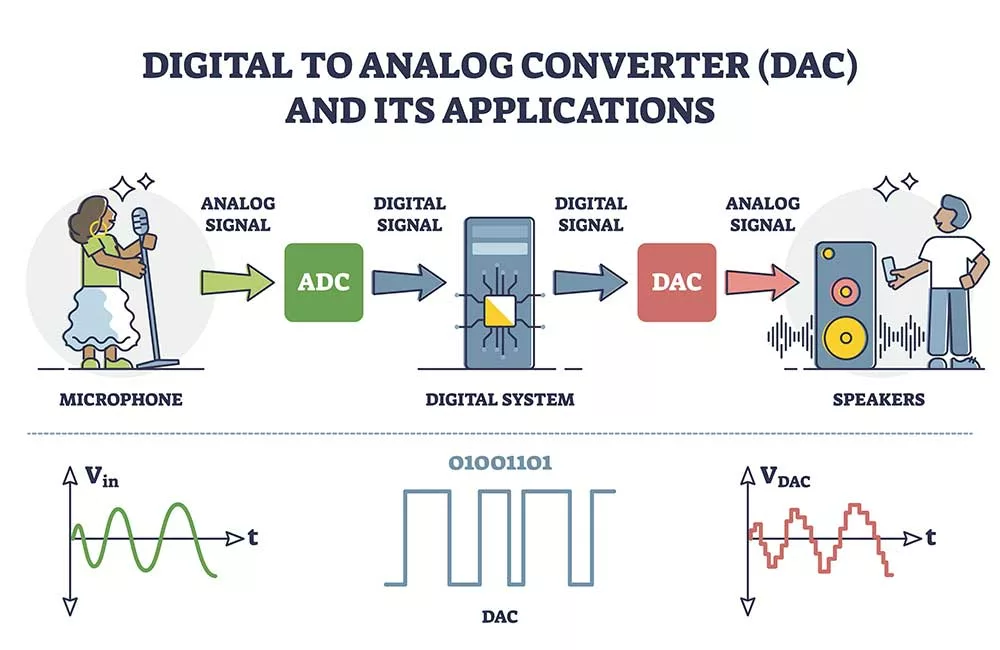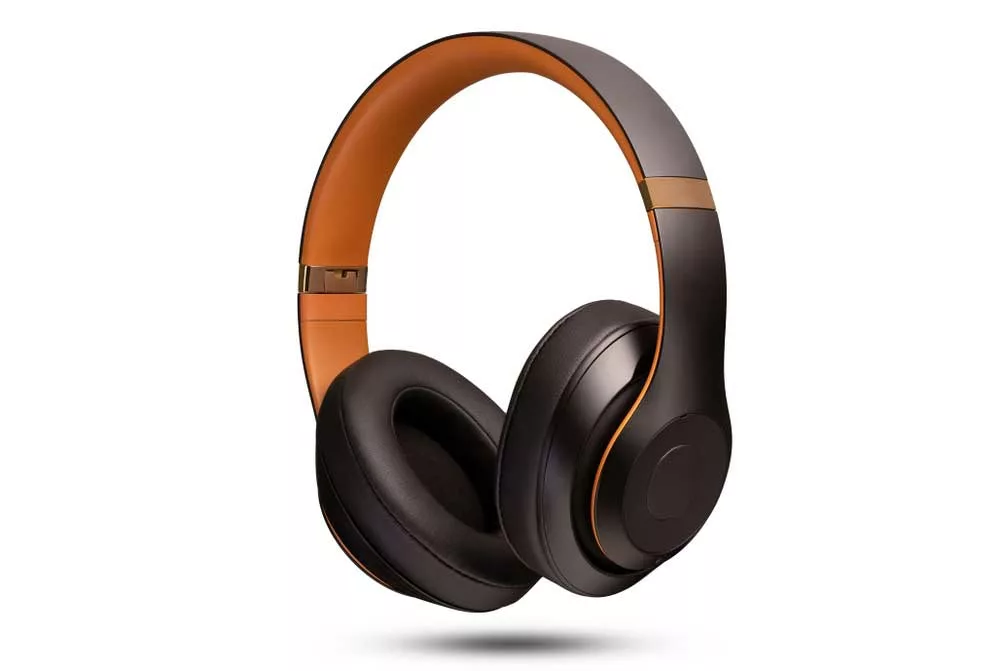Many new audiophiles need help telling the differences between an amp and a DAC’s role in an audio system. That is why we have crafted this amp vs. DAC comparison.
An amplifier (amp) and Digital-to-Analog Converter (DAC) can never miss in a working audio system. You already have them embedded on the circuit board of your home stereos, PC, and phone.
Their role is generally to improve the listening experience in an audio system. However, they achieve this in different ways. So, what is the difference, and which is the most important component in the audio system?
Table of Contents
- What is an Amp?
- What is a DAC?
- Amp Vs. DAC: The Key Differences
- DAC VS. Amp: Pros and Cons
- AMP Vs. DAC: How to Choose
- FAQs
- Final Verdict
What is an Amp?
An amplifier or a power amp strengthens the signal power from your source (phone, computer, etc.) to drive a listening device (headphones, IEMs, or speakers). Without an amp, you cannot get audible output.
Most devices that output audio, such as computers and phones, have built-in amplifiers embedded in their circuit boards. Even your old wireless phone has a small power amp to drive the earpiece.
However, most built-in amps in devices are weak and ineffective for high-end headphones. In this case, you should get an external amp.
What is a DAC?
A DAC is a device that converts a digital audio signal from sources such as computers to an analog waveform that your speaker or headphone can play.
During recording, microphones receive analog sound signal, which requires much space to store. Analog-to-digital converters (ADCs) convert analog audio signals to digital signals, which need limited storage space.
However, you can’t hear digital sound signals because they rapidly move 1s and 0s in a microprocessor. You will need something to convert the signal to an analog format that your speaker can play. That is where DAC comes in.
DAC is built-in in any contemporary audio player, including a PC, clock radio, speaker, and MP3 player. However, consider an external DAC to listen to high-quality music or bitrate.

The role of the digital-analog converter
Amp Vs. DAC: The Key Differences
The similarity between these two devices ends in their ability to process audio signals for a better listening experience. However, the differences come in many aspects.
- Purpose
An amp improves signal power from your source to the listening device. A DAC, on the other hand, transforms digital signals into analog signals that your speaker or headphone can play.
- Audio Quality
Amp’s main role is to make your premium audio device louder. However, the Digital-to-Analog Converter controls the audio quality itself.
- Features
Though there are some similar features of amps and DCAs, such as input-output connectors, these two devices widely differ regarding features. Here are some of the features you may not find in both.
Amps features
- Volume Control: Adjusts the volume of the output audio.
- Power Output Defines the maximum power an amp can deliver to the headphones and speakers in Watts.
- In-built Equalizer: Adjusts the frequency of the output audio with the help of equalization settings.
- Tone Controls: Adjust the frequency balance of the output audio for functions like treble and bass.
- Bluetooth Connectivity: Connects the Amplifier to other Bluetooth-enabled devices like smartphones.
DAC features
- Digital processor: Performs digital signal processing, for example, converting digital waveforms to analog, reducing noise, and upsampling.
- Audio Formats Support: Supports and Converts various audio formats, including FLAC, WAV, and MP3.
- Display Screen: For viewing the details of an audio signal, including sample rate and format.
DAC VS. Amp: Pros and Cons
Amps and DAC have unique strengths and drawbacks that we’ll look at to help you find out what suits your needs.
Pros of a DAC
- Crossover filters to split signals
- Cleaner sound, free of interference
- Pure digital audio info input
- Fewer feedback than on other devices
- High-accuracy and resolution audio
Cons of a DAC
- Slower processing due to longer signal chain and circuit
- Resistors in the circuit cause some effects
- Low-quality DAC can cause audio jittering
- They are pricier than amps, especially the high-end ones.
Pros of an amp
- Straightforward to operate
- Faster processing due to shorter signal chain and circuit
- Increases both the power and volume of an audio signal
- Upgrading with various systems is easy
- It can be used with several devices beyond USB-compatible ones
Cons of amps
- Can introduce feedback in some cases
- Some models can be costly
- Possible interference in the signal chain
AMP Vs. DAC: How to Choose
Your audio system will determine the type of amp and DAC that you buy. Here are some of the factors to consider.
Compatibility: Not all amps and DAC will be compatible with your audio system. You must check if the available amp or DAC is compatible with your headphones or speaker.
Quality: Consider the overall performance, durability, and efficiency of the DAC or AMP.
Budget: Define your budget and consider whether it’s worth going for a high or low-end amp or DAC model
Features: Check that your AMP or DAC has all the specs you seek. However, some considerations are unique to each component.
Amps
Power output: amps with higher power output can deliver more power to high-impedance headphones. It is a good idea to determine if the amp is powerful enough to drive your headphone or speaker.
Impedance ratings: For the best quality audio output, impedance headphones ratings should be around 2.5 -8x higher than your amp’s.
DAC
power draw: DAC power draw should be zero for USB DAC. If you are plugging the headset into your DAC, consider a DAC that supports 3.5mm jack audio input other than supporting just audio output.
FAQs
Do I Need a DAC or AMP Combo?
Many audiophiles prefer the DAC/amp combo because they are more organized, cheap, and guarantee a better channel balance in the sound output. You’ll also need the combo when using a higher-end headphone with high impedance.

High-end headphone
Can a DAC be Used as an Amp?
You can only use a DAC with the amp for a better sound experience. DAC can convert a digital waveform to an analog waveform that your headphone or speaker can play. However, the output sound is too weak to play on speakers without an amp.
Should I get a DAC or an amplifier?
For a premium device, you will need a DAC and an amp for better sound output. However, an amp should be your priority because you need it to make the audio system louder.

An amp makes the audio system louder.
Final Verdict
The main difference between these two components lies in their functions in the audio system. Although they have different roles, they give better sound quality when used together. DAC transforms digital signals into analog signals, a format that your headphone or speaker can play. The amplifier powers up the audio signal to make them audible. Therefore, you will need both if you want the best out of your headphones or speaker.
